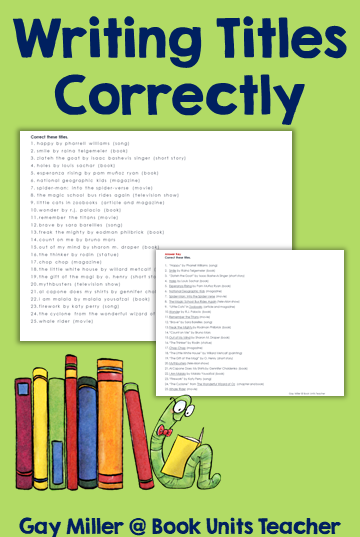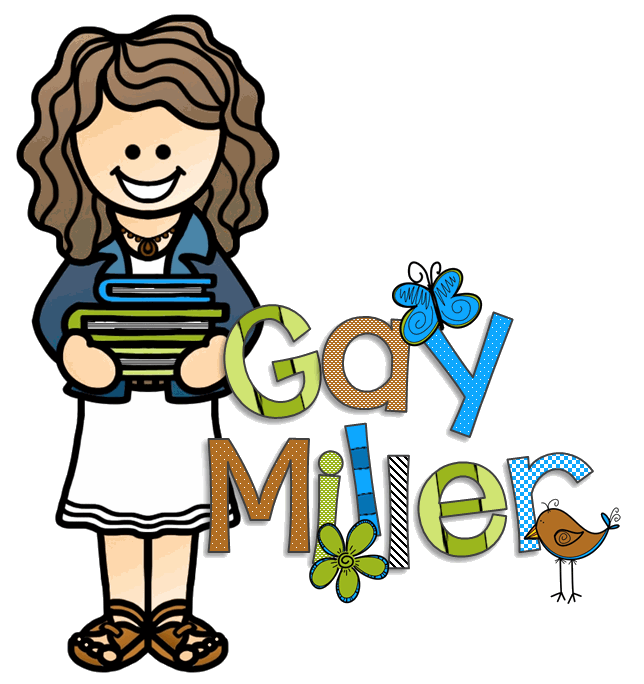
If your students are naming their essays things like “how to Train your dragon” or “Diary of a wimpy kid,” then yes—it’s time for a quick and cheerful intervention on writing titles correctly. Capitalizing and punctuating titles isn’t just about grammar… It’s about helping students present their ideas with polish and pride (and pass 5th grade with confidence).
This lesson hits L.5.2.D with everything you need: anchor charts, foldables, title-taming practice, and even a little storytelling to show students why capitalizing titles actually matters.✨
👉 Grab the handout here: It includes the organizer, printable activities, and 25 title fix-ups for practice.
 Writing Titles
Writing Titles
Start with this story.
Your student turns in a book report titled the secret garden written entirely in lowercase. You set the paper down gently—like it’s made of glass—and ask if they’ve ever seen the cover of the actual book. The answer: “No, but the movie was good!”
Titles are the front door to any piece of writing. Whether it’s a poster, research paper, or poem, a title sets the tone. Helping students learn to capitalize correctly is less about commas and more about presentation—and attention to detail.
Learning Capitalization and Punctuation Rules
Rule 1: Capitalizing Titles (Without Overthinking It)

Capitalize:
- the first word
- the last word
- every important word in between
Skip capitalizing:
- short prepositions (in, of, to, on)
- coordinating conjunctions (and, but, or, yet, so)
- articles (a, an, the)
Helpful tip: Ask students, “Does this word make the title meaningful, or is it just holding other words together?”
Rule 2: Punctuating Titles
- Underline [or italicize when typing] titles of big works: books, magazines, newspapers.
- Charlotte’s Web
Charlotte’s Web
Charlotte’s Web
- Charlotte’s Web
- Use quotation marks for smaller pieces or parts of longer works: songs, poems, chapters.
- “The Road Not Taken”
- “Chapter Five: Trouble Brewing”
Want to level up your punctuation talk? Bring in visuals! Anchor charts do wonders.
Writing Titles Lesson
Lesson Hook: Classify the Texts
Ask students: “What kinds of things do you read?”
Create a classroom list (whiteboard, SmartBoard, or chart paper works great) that includes:
- books
- poems
- magazines
- song lyrics
- news articles
Then sort by long vs. short works. Teach that short = part of something bigger. Highlight each with color, underline, or quotation marks to build fluency and familiarity.
This paints the “title punctuation picture” in real time. 🎨

Organizer Time
Help students capture both sets of rules in a foldable organizer for their notebooks.
They’ll jot down the basics, then use the inside flaps to expand with examples. This can become their go-to reference all year long.
Practice Makes Perfect (or at least properly capitalized)

Let students correct 25 scrambled titles that include:
- popular books
- movies
- songs
- magazines
- short stories
Examples to fix:
- the fault in our stars
- ghostbusters
- “firework”
- They’ll highlight, rewrite, and maybe even debate whether Pokemon counts as a long or short work (real classroom drama right there).
Bonus Practice Ideas
Try a classroom scavenger hunt.
- Pull books from the classroom library.
- Have students mark them with sticky notes based on how they should be written in a sentence.
- Sort real titles into “quotation marks” or “underline” piles.
Or play a “Title Fix Relay”—teams compete to correctly edit silly examples on sentence strips.
Download the handout for the lesson materials. Your handout includes:
- a title classification worksheet
- foldable rule organizer
- 25 title edits for independent or small-group practice
See the product that inspired this post.
Teaching Capitalization and Punctuation with Animated Shorts covers all 4th–6th grade Common Core State Standards for capitalization and punctuation. All activities are included in both printable and Google Slide versions.



